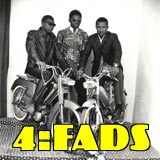| 
Looking at something from the outside is never the same as knowing it from within. All one can see from the outside are birthmarks on the body of consumer culture. From the inside it looks utterly different. Nevertheless, nostalgia for the Soviet Union is a particular phenomenon, and for the most part psychological in nature – anyone over 25 will no longer feel any. In London recently I saw more jackets emblazoned with the slogan 'CCCP' than I had seen in Kiev during the whole of the previous year. And, in any case, Kiev is far from representative of Ukraine as a whole. It is young Ukrainians and foreigners, very often employees of foreign companies, that hang out in the kinds of themed restaurants and nightclubs that Dickinson writes about. The branding of 'CCCP' as one finds it on the main streets in the Andreevskiy Spusk quarter is essentially aimed at such tourists. Symbolic objects of a bygone age (like boy scouts' ties and other such Soviet paraphernalia) or everyday items reflecting our national culture (like fur hats with earflaps) cannot be called 'fads' because they are produced merely as souvenirs. Even scouts' songs, which I myself still enjoy singing, no longer suggest nostalgia, but are a unique kind of cultural protest against the anti-Soviet protests, a sign of an enduringly healthy, cheerful sense of humour. Such humour is extremely complex and informed by many historical subtexts. It is too intricate a phenomenon to be reduced to a casual fashion accessory. The romanticising of the Soviet Union is no more than the equivalent of the American Wild West with its cowboys and Indians. Even in the golden age of the Hollywood western, the films of Clint Eastwood and others could not claim to represent all of America. After seeing "The Magnificent Seven" Americans did not start opening up saloon bars everywhere. Admittedly, I never went to America during that time, so I may be mistaken. Nevertheless, I believe that if such a wave had arisen in the US, it would surely have rolled as far as the USSR, if only for reasons of propaganda. Translated from the Russian by Alex Milner. |  | 
"Ukrainians", Andrei Kurkov writes, "have a special immunity that protects them from the gaudy attractions of fashionable trends." According to Kurkov Ukraine is not very "fad-friendly" because of a number of factors. These range from rural isolation and disorientation due to a confused sense of nationality to the economic disparity that makes common ground between the mega-rich and desperately poor next to impossible. While all these observations are insightful, however, they can hardly be seen as exclusive to Ukraine. For my money the reference to Ukrainian "special immunity" is the most interesting of all Kurkov's observations. However, one should dig deeper to find its real cause. I would wager that while economic factors are no doubt at work, any widespread lack of interest in fads and fashions that could be detected among the wider Ukrainian population would have its roots planted firmly in both the Soviet mindset and the Tsarist oppression that preceded it. In both regimes, such things as fashion were strictly for Them, and not Us. This two-tier social system remains very much in place in Ukraine, and so ingrained is it that many people – even ten years after the collapse of the Soviet Union – would not dream of questioning its validity. As Kurkov rightly points out, while there is no general Ukrainian culture of following trends, evidence of any such development in the future should be viewed as an important milestone along the road to national rehabilitation and social growth. The day when nationwide fads are commonplace will indeed be a day worth celebrating, for in a country where any kind of freedom of choice was discouraged, surely making fashion statements and following silly trends is a sign of a society getting healthy. |

